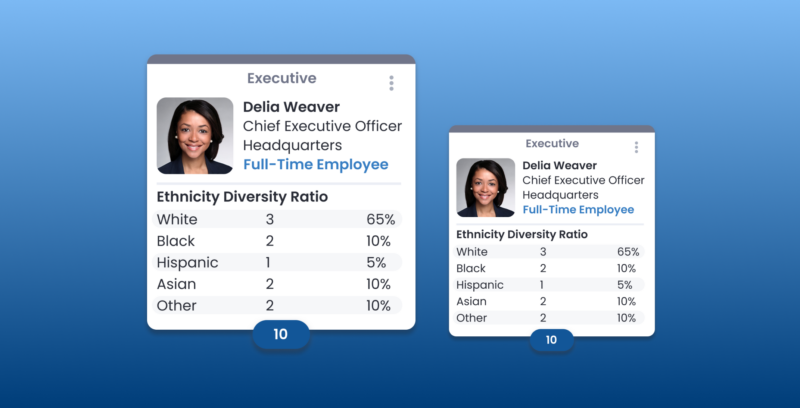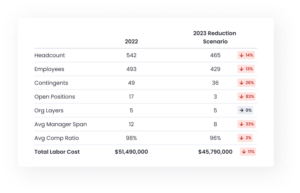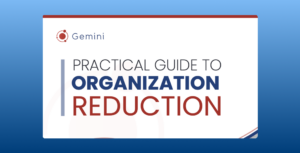How to harness the power of HR
Human resources (HR) is an essential function of any organization. It involves managing people, hiring and retaining employees, providing employee benefits, and creating a positive work environment. Harnessing the power of HR can lead to better employee engagement, increased productivity, and improved profitability for the company. However, to fully leverage the power of HR, it is essential to have access to the right data and analytics.
In this blog, we will discuss how using lenses to view proprietary workplace metrics across your org chart can help you better understand your costs, demographics, and risks and easily visualize important metrics like tenure, salary benchmarking, diversity, and succession plan gaps across your entire workforce.
What are Lenses™, and why are they important?
Lenses™ are a powerful tool for analyzing data across your organization. They allow you to view specific metrics or data points that are relevant to your business and help you make better-informed decisions. For example, you might use a lens to view the demographics of your workforce, or to track employee retention rates.
Lenses are important because they allow you to see trends and patterns that might not be immediately apparent. By looking at data through different lenses, you can gain a deeper understanding of your organization and identify areas for improvement. With the right lenses in place, you can make more informed decisions about how to allocate resources, where to focus your efforts, and how to measure success.
How can lenses help you harness the power of HR?
When it comes to HR, lenses can be particularly powerful. By using lenses to view key metrics, you can gain a better understanding of your workforce and make data-driven decisions that can improve your business. Here are some examples of how lenses can help you harness the power of HR:
- Cost lens: Using a cost lens, you can track the cost of employee benefits, salaries, and other HR-related expenses. This can help you identify areas where you might be overspending, as well as opportunities to reduce costs.
- Demographic lens: By using a demographic lens, you can view data on the age, gender, and ethnicity of your workforce. This can help you identify diversity gaps and create a more inclusive workplace.
- Tenure lens: A tenure lens can help you track the length of time employees have been with your organization. This can help you identify turnover trends and take steps to improve retention.
- Salary benchmarking lens: With a salary benchmarking lens, you can compare the salaries of your employees to industry standards. This can help you ensure that you are offering competitive compensation and benefits packages.
- Succession planning lens: A succession planning lens can help you identify potential leaders within your organization and create a plan to develop and retain them. This can help you ensure that your organization is well-prepared for the future.
How can you implement lenses in your organization?
Implementing lenses in your organization requires the right tools and technology. You will need a system that can collect and analyze data from across your organization and present it in a way that is easy to understand. There are many HR analytics tools available that can help you implement lenses, such as Gemini.
Once you have the right tools in place, you will need to identify the lenses that are most relevant to your business. This will depend on your specific goals and challenges. For example, if you are concerned about employee turnover, you might want to focus on a tenure lens. If you are focused on creating a more diverse and inclusive workplace, an Ethnic Diversity Ratio lens might be more appropriate.
Finally, it’s essential to ensure that your lenses are integrated into your decision-making processes. Once you have identified key metrics and established a system for tracking them, make sure that you are using this data to inform your decisions.





